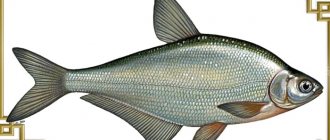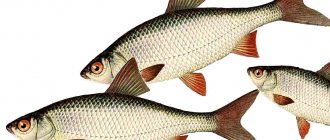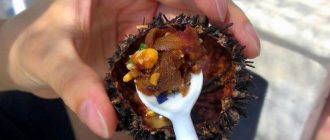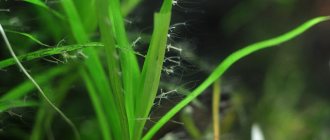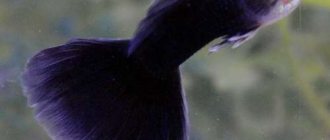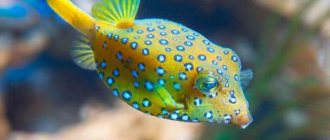XXI CENTURY Candy Fudge Scented water
266 ₽ More details
Video baby monitor Motorola MBP36S (white)
12900 ₽ More details
Women's shoes
The beautiful name of the dragonfly larva is a real mystery for many. Outwardly, it is so different from the brightly colored adult that it appears to be a different species of insect. The habitat, and therefore the way of life, is also completely different. Finding out where and how this miracle of nature lives, in order to take a look at its appearance on occasion, is very interesting and informative.
Externally, the dragonfly larva is so different from the brightly colored adult that it appears to be a different species of insect.
general information
Kazara
Dragonfly larvae (kazara)
painted in brown-olive tones. Dragonfly eggs are laid in water or in the tissue of aquatic plants. The eggs hatch into larvae of an extremely characteristic shape, interesting in their biological characteristics. These larvae play an important role among other living material of freshwater excursions.
Dragonfly larvae are found everywhere in standing and slowly flowing water. Most often they are found on aquatic plants or on the bottom, where they sit motionless, sometimes moving slowly. There are species that burrow into mud. All larvae can be divided into three groups:
- Larvae of the rocker dragonfly type (Aeschna
) with an elongated body and a flat mask. This includes the largest species that are similar to each other. In the northern regions there are representatives of the genera: Gomphus - grandfather, Onychogomphus, Gordulegaster, etc. - Larvae of the common or true dragonfly (Libellula) type
with a shorter and wider body than the previous ones. The mask is helmet-shaped. They stay mainly at the bottom, often in a layer of silt. The following genera are typical for the northern regions: Libellula - true dragonfly, Cordulla - grandma, Leucorrhinia, Epitheca (Fig. 206), Sympetrum, etc. - Larvae of the lute type (Agrion)
with a very long elongated body, which has leaf-shaped gill plates at the rear end. We have representatives of the genera: Agrion - arrows, Lestes - lyutki, Erythromma (Fig. 207), Calopteryx - beauties, etc.
Titles
The larvae of some groups of animals have special names. Usually, when talking about a species of animal, without specifying the stage to which it belongs, or when talking about a species as a whole, the name of the adult form is used, for example: “butterflies are an order of insects with complete metamorphosis.”
| Larva name | Animals |
| Insects | |
| Caterpillar | Butterflies (Lepidoptera) |
| false caterpillar | Sessile bellies (Symphyta) |
| Nymph | All insects with incomplete metamorphosis - hemipterans, orthoptera, mantises, dragonflies, etc. |
| Wireworm | Click beetles |
| Other invertebrates | |
| Glochidia | Freshwater mollusks of the pearl mussel (Unionidae) and pearl mussel (Margaritiferidae) families |
| Trochophore | Free-swimming (planktonic) larvae of a number of marine animals. They have several rows of cilia that aid in feeding |
| Nauplius | A type of larva in many crustaceans that uses head appendages for swimming |
| Vertebrates | |
| Tadpole | Tailless amphibians |
Sawfly larva Tenthredo marginella (false caterpillar)
Description
When we are near bodies of water in the summer, we are all accustomed to seeing colorful dragonflies scurrying back and forth. This shy insect, which is almost impossible to catch with your hands, is often prey for fish that hunt in the surface layer of water. A dragonfly's habit of landing on twigs or lily pads that have fallen into the water, or simply a desire to fly too close to the surface, can be fatal. Bleak, chub, trout - all these fish are not averse to eating dragonflies. But few people know that much more often the victim of hungry fish is not the dragonfly itself, but its larva.
The larvae of each dragonfly species have their own unique shape. Frankly speaking, their appearance is not particularly pleasing to our eyes with beauty. Some of the dragonflies have creepy-looking nymphs - this is the scientific name for the larval stage of insect development. Traditionally, dragonfly larvae live and develop in reservoirs or parts of reservoirs with standing water, often silted, overgrown with aquatic vegetation, or swampy. Moreover, they easily survive both in completely fresh water bodies and in brackish ones. Depending on the species, nymphs can live burrowing deep into the muddy bottom, or move in the mud near the surface, or along the bottom itself, crawling along it with enviable leisureliness. Many species also live in thickets of aquatic vegetation, where it is easier for them to hide from external enemies. Depending on the habitat, the color of the nymphs varies - from yellow to almost black.
Development and reproduction
The development of dragonflies, unlike other insects, is characterized by incomplete transformation - there is no pupal stage. Some species living in southern latitudes are capable of producing several generations per year. The mating process takes place right in the air and lasts from a few seconds to 2-3 hours.
After fertilization, the dragonfly lays eggs directly on water, plants and other floating objects. Females of some species are able to dive under water to a depth of 1 meter, remaining dry, thanks to the air bubble that surrounds the body.
Stages of development:
- Eggs are round or elongated. Their color can vary from light yellow to brown, and their number can range from 250 to 500 pieces. Sometimes they are covered with a special mass that resembles jelly, or are collected in strands.
- The larvae can also be called nymphs or naiads. They differ significantly from adult individuals, which is associated with an underwater lifestyle. It is worth paying special attention to the head, which is generally no different from the imago, with the exception of the oral apparatus. The lower lip of the insect is a unique grasping device designed for effective catching of prey - a mask. When capturing food, it opens very quickly, pierces the victim with sharp edges and pulls it to the mouth. Breathing is carried out using gills. During development, the nymph goes through a cycle of several molts, gradually developing and changing.
- Imago is the final stage of life. By the time of the last molt, the insect is already able to breathe air. Under its shell there is an almost formed individual. Before shedding its cover, the larva climbs out of the water onto a plant and sits motionless on it for several days. The old shell bursts, and a fully formed dragonfly emerges.
Dragonflies are the most common predators of the air, capable of absorbing everything indiscriminately. Cannibalism is quite widespread among these insects. Larger individuals easily attack small ones.
Method of obtaining larvae
For prey, geese use a kind of “mormyshnitsa”. The device is a metal tube with a diameter of 15-20 cm and a length of 20-30 cm, one side of it is tightly welded and a mount for a wooden handle (like a shovel) is welded to it. The other side is cut slightly at an angle to the length, and holes with a diameter of about 1 cm are drilled in rows in the walls of the tube.
Dragonfly larvae are dug for fishing 1-3 days in advance. To do this, they look for banks with steep muddy ravine. The jig is stuck into such a bank, at a depth of 0.3-1 m under water, and then, filled with silt, it is raised to the surface. And at the water's edge, they pick out the silt with their hands, pouring water on it. In the silt, you can’t even see the larva, but when doused with water, it begins to flutter and is quickly transferred to a jar of water.
Biological features of dragonflies
Insects live near fresh water bodies, although they can also be found at a considerable distance from the water.
Dragonflies have a number of abilities that a person could only envy. First of all, this concerns the structure of the eyes and the exceptional vision of the insect. The dragonfly sees in all directions at the same time, which helps it provide itself with food, which requires a very large amount.
Thanks to its unique vision, it rarely becomes prey for other predators. And it can also be difficult for a person to catch it.
The movement of a dragonfly's wings is interesting because they can flap alternately and in any sequence. Only she has such a perfect aircraft. It is this that allows you to move in different directions during flight, hover, and make sharp throws.
Fishing with kazara
The most promising time for using goosefish as bait is from the beginning of June to the end of September. When fishing with a float rod, anglers who fish with maggots have a significantly larger catch than anglers who fish with dung worms or maggots.
When placing this bait on a hook, the hook tip is threaded through the body, starting from the head of the larva. You can start planting from the head. As you prefer. It is advisable to place several small larvae on one hook.
The larvae are great for catching ide, fairly large perch, silver bream, chub and many other fish.
What do dragonflies eat?
The insect hunts for its prey in flight. To do this, the dragonfly has to rush over a pond or along the shore at great speed. An interesting fact is that it does not track or chase insects, but intercepts them, “calculating” the trajectory of the victim’s movement. Butterflies, mosquitoes, flies become prey - this is what dragonflies feed on daily.
The caught insect is first neutralized. To do this, the dragonfly clasps it with its front legs to prevent it from moving. The victim's wings are then torn off. The helpless insect enters the predator's mouthparts, where, with the help of powerful gnawing organs, the food is crushed into a pulp, and then further digestion occurs.
After swallowing its prey, the dragonfly begins hunting for insects again. The predator very rarely rests. She spends most of her time in motion, which is what the dragonfly's nutrition is associated with. Her extraordinary gluttony does not allow her to “idle”.
Scientists, observing the life of an insect, made an amazing discovery and established what dragonflies eat at home and how they do it. During one such experiment, it was recorded that a dragonfly ate 30 flies one after another without stopping. It is possible that the number of insects eaten could have been greater.
Born predator
Without exception, all types of dragonflies (both nymphs and adults) feed on insects, often blood-sucking (horseflies, mosquitoes, midges). The dragonfly's body shape is ideal for hunting on the fly. These insects are “lean”, with a pronounced chest and elongated abdomen. The head of a dragonfly is very mobile. There are two complex compound eyes on it, allowing the insect to see everything that happens around and behind, and between these two there are ordinary ones, which serve for orientation in space. The organs of vision are designed in such a way that a dragonfly sees best against the sky. Therefore, she attacks the victim from below. The insect has a powerful mouth (“gnawing,” as scientists say), short antennae and stiff legs covered with hairs that help capture prey. Each representative of the order has two pairs of wings, which are equally well developed. This means that it is a bimotor insect. Dragonflies can fly at speeds of over 55 km/h.
The eyes of a dragonfly are a true masterpiece of nature
If you look at the head of a dragonfly, you may notice one thing. More precisely, 30,000 things.
On the head of a dragonfly there is a pair of compound eyes, consisting of 30,000 so-called ommatiae (structural units). The viewing angle of such eyes is almost 360 degrees! Only behind the dragonfly’s back is there a blind zone of several degrees. Such vision allows them to fixate on midge prey, even if it is surrounded by other similar insects, and also avoid collisions while chasing it.
And not only do they have an exceptional field of vision, but they can see the world in colors we can't even imagine.
The human eye is designed in such a way that the light-sensitive cells present in it - cones - react most acutely to three colors: red, blue and green. That is, all the colors that we see are a combination of these three colors. This is due to the presence in our eyes of three different types of light-sensitive receptors - opsins. However, a study of 12 species of dragonflies showed that each of them has 11, and some even 30 opsins, which allows them to see the world in a completely different color than humans.
Notes
- Shcherbak G. Y., Tsarichkova D. B., Verves Yu. G. Zoology of spineless animals: handbook: Book. 2. - K.: Libid, 1996. - 320 p.
- Shvanvich B.N. Course of general entomology: Introduction to the study of the structure and functions of the body of insects (Textbook for state universities) - M.-L.: “Sovetsk. science", 1949. - 900 s
- Bondarenko N.V., Polyakov I.Ya., Strelkov A.A. Harmful nematodes, mites, rodents. – L.: branch of the publishing house “Kolos”, 1969. – 272 p.
- Zakhvatkin Yu.A. Acarology - the science of ticks: History of development. Current state. Systematics: Textbook. - M.: Book house "LIBROKOM", 2012. - 192 p.
- Skvortsov V. E.
Dragonflies of Eastern Europe and the Caucasus: Key Atlas. - M.: Partnership of Scientific Publications KMK, 2010. - 624 p. — 1000 copies. — ISBN 978-5-87317-657-1. - ↑ Popova A. N.
Larvae of dragonflies of the fauna of the USSR (Odonata). — Keys to the fauna of the USSR, published by the Zoological Institute of the USSR Academy of Sciences. Issue 50. - M.-L.: Publishing House of the USSR Academy of Sciences, 1953. - P. 9-52. — 236 p. — 1500 copies. - Raikov B. E., Rimsky-Korsakov M. N.
Zoological excursions. - 6th. - L.: Uchpedgiz, 1956. - 694 p. - ↑ Kutikova L. A., Starobogatov Ya. I. (ed.).
Key to freshwater invertebrates of the European part of the USSR. - L.: Gidrometeoizdat, 1977. - P. 266-268. — 513 p. - Marlatt C. F. (1907). "The periodical cicada". Bulletin of the USDA Bureau of Entomology. 71:1-181
- Life of animals. Volume 3. Arthropods: trilobites, chelicerates, trachea-breathers. Onychophora / ed. M. S. Gilyarova, F. N. Pravdina, ch. ed. V. E. Sokolov. — 2nd ed. - M.: Education, 1984. - P. 215. - 463 p.
Families
The table shows the main characteristics of some families.
| Name | Features, size | Wings, their size, flight | Color | Habitat |
| Beauties | Small, graceful, up to 5 cm | Homoptera, up to 7 cm. Flight like a butterfly | Blue, purple, green, with a metallic sheen | Small forest ponds, rivers and streams with quiet flows |
| Arrows | Very small, thin, up to 3 cm | Homoptera, up to 5 cm. Slow flight | Bluish-black, with thin blue rings | Stems and roots of aquatic plants |
| Real (they include the common dragonfly) | Medium, powerful, short, up to 6 cm | Various winged, up to 8 cm | There are dark triangular spots at the base of the wings. Flathead dragonflies: brownish-yellow chest, males have a blue abdomen. Eyes of different shades of green. Blood dragonflies: shades of red, brown, orange, yellow | Ponds, quiet rivers, coastal sand |
| Grandfathers | Medium, with a long flight, up to 6 cm | Various winged, up to 7 cm | Variegated, black and yellow | Flowing reservoirs |
| Cordulegasteridae | Large, up to 8 cm | Various winged, up to 10 cm | With black and yellow stripes | Forest glades, lakes, rivers |
| Rocker arms | The largest, up to 9 cm, hardy | Various winged, up to 11 cm | The chest is green, the abdomen is blue, with spots | Stagnant, dry ponds, rotting plants |
Where does the dragonfly live?
The habitat of the chirping insect is as vast as the variety of coloring options. But you can find spotted individuals, yellow, green, blue, pearl blue. There are also interesting darkenings on the abdomen against the background of the main color.
Dragonflies prefer maximum proximity to water bodies, an abundance of food, and a fairly warm tropical climate. This expands their possible habitat to almost all continents of the globe. They are common in:
- Russia,
- Italy,
- America,
- India,
- Iran,
- Turkey,
- China,
- Africa,
- Australia.
They do not survive in dry, low-water areas.
Character and lifestyle of the dragonfly
Dragonflies lead a solitary lifestyle, preferring to hunt on their own. Thanks to its specific wing structure, a dragonfly can either hover in the air, making an instant stop, or fly over vast distances, covering several hundred kilometers without rest.
During landing, the dragonfly does not fold its wings, like many other insects, but always leaves them in a straightened state.
The main peak of activity occurs during daylight hours, during which dragonflies fly in search of prey.
During hot hours, they can be observed in huge numbers along the banks of reservoirs and above forest edges.
The flight of a dragonfly is characterized by noiselessness, thanks to which the dragonfly can unnoticed approach its prey.
They can make intricate turns in the air, do somersaults and even fly backwards. Thanks to this ability, dragonflies can easily escape from predators pursuing them.
Structure
The dragonfly, the structure of which we are considering in this material, has a long and very thin body. It, in turn, is connected to the cephalothorax. On the dragonfly's body we can see three pairs of legs and two pairs of wings
It is also important to note that the wings are transparent; they can have the same size and shape, or different. We will talk about this in more detail when we consider the types
The dragonfly, whose structure can vary by species, can belong to one of two main groups:
- Homoptera.
- Varioptera.
As you might guess, the first group includes individuals that have wings of equal length and shape, while others have the opposite (one pair can be very different from the other). On the dragonfly's head we can clearly distinguish large eyes and antennae. A little more about the senses. The eyes of these insects are complex. They can be divided into two sections:
- the top one, responsible for object recognition;
- the lower one, responsible for color recognition.
You've probably noticed that the transparent wings of dragonflies have veins along their entire length, and at their tips there are spots darker than the color of the wings themselves. This device helps avoid wing fractures by reducing vibration during flights.
Remember how flight occurs in other flying creatures. This is a beautiful and synchronized movement of the wings. Dragonflies have distinguished themselves here too; the movements of their wings can be asynchronous when they are balancing, but synchronous to increase speed
It is also important to know that these nimble creatures can reach flight speeds of up to 50 kilometers per hour.
Population and species status
Photo: What a dragonfly looks like
The population of the order Odonata is large and diverse. There are more than 6,650 species of these insects in the world. These insects are found on all continents and migrate. Many species of these insects live and reproduce well in the wild. However, today some species of dragonflies are on the verge of extinction and their populations are rapidly declining. This is due to human pollution of dragonfly habitats.
A number of species are listed in the Red Book. At the end of 2021, there are more than 300 species listed in the Red Book. Of these, 121 species are on the verge of extinction, 127 subspecies have the status of insects in a vulnerable position, and 19 subspecies are already extinct. The species Megalagrion jugorum is considered extinct. In the global population, about 10% of all dragonfly species are on the verge of extinction.
Dragonflies are a very important group that indicates the condition of water bodies, since dragonfly larvae react strongly to any changes in water quality. Dragonfly larvae die in polluted waters. In order to maintain the population of these insects, it is necessary to be more careful about the environment. Install cleaning equipment at enterprises, create protected areas in dragonfly habitats.
Nutrition
Dragonflies are aggressive predators that pose a danger to many species of insects (mostly flying ones). They even attack those larger than them, and in most cases successfully. Interestingly, most species eat prey on the fly while in the air. They are very voracious, so they eat several dozen insects per day, the total weight of which significantly exceeds their own weight.
So, what do adult dragonflies eat:
- mosquitoes;
- flies;
- midges;
- beetles;
- spiders;
- moth;
- dragonflies.
These insects can be divided into several categories according to their hunting method:
- free upper tier predators - species that can fly high, lie in wait for prey at a height of 2 - 9 m above the ground;
- free hunters of the middle tier - hunt at a height of 0.5 - 2 m above the ground, most often circling over bodies of water, only occasionally resting on the grass or plants sticking out of the water;
- lying in wait hunters - sit in ambush on blades of grass or bushes, waiting for a prey flying past, and when they notice it, they suddenly take off and attack;
- grazing predators - hunt in thickets of grass, flitting from place to place in search of prey, having caught it, they eat it while sitting on a plant.
Dragonfly larvae feed on fish fry, leeches, insect larvae, tadpoles, and small crustaceans.
Dragonfly fishing
Most fishing for dragonfly larvae is carried out from April to June. In subsequent months, a good bite is observed in an adult dragonfly, whose wings are clipped in front of the hook. Many fishermen do not catch dragonflies as bait because they eat the annoying mosquitoes en masse. The most commonly used is dragonfly larva. We hooked it by placing the sting under the head and taking it out at the tail.
In spring and the first half of summer, it bites the dragonfly larva beautifully:
- Rudd;
- Ide.
- Tench;
- Perch;
- crucian carp;
Other species of fish are also caught, which often appear near coastal vegetation before spawning. Catching dragonfly larvae is carried out from the shore and along a plumb line. Light game bait attracts a lot of fish during the pre-spawn season. A good bite can be expected when fishing near the edges of algae or in the “windows” of bottom vegetation.
So, in the spring-summer period, you should not ignore the catchy bait, which is the dragonfly larva. Of course, they prevent the reproduction of blood-sucking mosquitoes, but at the same time they successfully eat the larvae of various types of fish.
